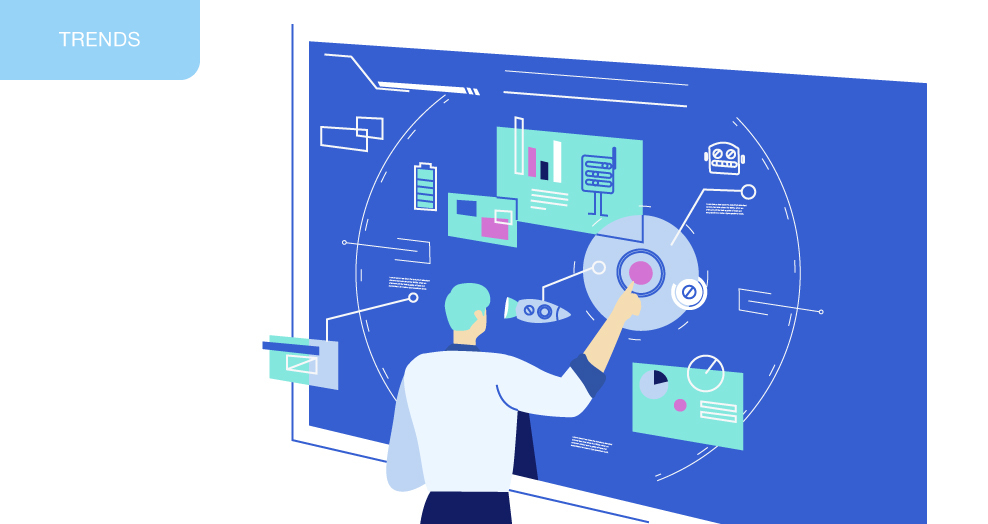What should you look for in 2020? We are unpacking the newest software development trends.
Frontend will meet DevOps as competencies shift
How people interact with a website is no longer just a marketing concern. The user interface is now critical application code and it contains core business logic. This shift in application importance means frontend development teams will start to look more like product teams as development and operations merge.
These teams are deploying their own code and making changes so rapidly that they are often moving too fast for separate operations teams to have the full context to mitigate application errors. We will see these frontend teams become more generalized in their skillsets and become responsible for development, testing, and operations as the process becomes a continuous cycle of integration and delivery. These teams will be on call for incidents and interacting more with monitoring tools to ensure uptime. Those writing JavaScript are going to learn about getting paged in the middle of the night.
Tool and framework frenzy will continue; Fatigue will worsen
The plethora of tools, languages, and frameworks are adding massive complexity to the application development ecosystem. IT teams are challenged to interconnect these disparate languages and platforms to build applications that are the lifeblood of business in today’s digital economy.
While conference halls echo with cries of tool and framework fatigue, there will not be a clear resolution in 2020. In fact, there will likely be more disruption. Although it seems React.js is approaching victory for frontend development, there are still a number of viable competitors ready to shake things up. On the backend, there is still no standardization, in spite of significant innovation in recent years. PHP, Ruby, Python, Node.js, Java, and .Net are all in use—but there is no clear winner and that won’t change in 2020. As teams struggle to connect it all, even more tools—many of which will be open source—will emerge to integrate technologies, but the challenges of complexity and control will get worse before they get better.
Pendulum swings back towards consolidation
In recent years, innovation has revealed a host of new tools from big vendors, startups and open source projects, each promising to tackle the next big issue. But it is challenging to maintain compliance and controls when cobbling together a heterogeneous mix of technology at different maturity levels.
And while the next decade will certainly bring more innovation, we can also expect the proverbial pendulum to begin swinging back toward consolidation of platforms and tools as overwhelmed IT teams look for ways to simplify their stacks and reduce risk. Vendors offering universal solutions that span multiple platforms and integrate seamlessly into enterprise environments will continue to see adoption. While companies may continue to offload infrastructure management to third parties—cloud vendors, SaaS providers, and others—in an effort to refocus their resources on building the business, there will be a lagging interest in new tools that offer just the 1% value add.
Engineering concerns will align with user concerns, changing how we monitor applications
As we invest more in user interfaces—which will increasingly become the actual application—we will see engineering concerns more closely align with customer concerns, which means a lot of our tooling and accountability will also shift.
We will need to monitor more than just backend server availability. We will need to monitor how the customer interacts with the product and business because each application iteration can impact user experience, whether positively or negatively. When development teams have a more comprehensive understanding of user interactions and application performance, they can more effectively build applications that drive business value.
Read the full story at JaxEnter.

